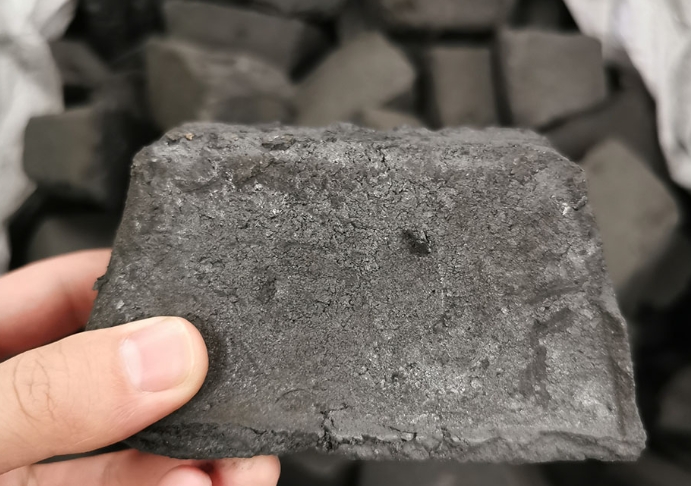
The electrode paste (ECP), a key ingredient for the production of continuous self baking electrodes in closed electric smelting furnaces used to produce calcium carbide, ferroalloys as well as other alloys. It is available either as briquettes or in cylinders.
It is manufactured from a special blend of carefully selected raw materials and additives. These include calcined petroleum coke, coal tar pitch and various other carbonaceous materials such as granular and powdered graphite, as well as a number of additives which enhance the material properties and ensure the high level of performance required in the final product.
This specialized blend is then kneaded until it becomes a cylindrical, or briquette shaped electrode. It can be used for the current conductor of a submerged electric melting furnace. When the cylinder is placed into the electrode column in the electric smelting oven, it slowly bakes, carbonizes, and forms an electrically-conductive carbon block.

During the melting process, the electrode transports electricity and converts that into heat. This heat then is used to smelt the raw metals and refine them. It is important that the carbon electrode is strong and durable, and able to withstand the high temperatures of the electric smelting furnace. It must also be able resist the pressure and abrasion from the electric current as well as the chemical atmosphere.
Electrode Carbon Paste is distinguished by its low energy consumption, as it can work with a working current density as low as 8-6A/m2. It is easy to manufacture and requires only a few raw materials. It also has a high conductivity.
To achieve the quality required, the raw materials need to be screened. This separates the fractions that are then pulverized. Then, the predetermined quantities of different fractions will be weighed out and mixed with a Sigma Mixer at a specified temperature and time. This process is called the mixing phase. The raw material is then sintered to produce an electrode.
The sintering is a complicated operation that occurs in several stages. Each of these stages has its own requirements. The electrode carbon paste is roasted to temperatures over 1000 degC in the first stage, which results in an amorphous material. The second stage involves the sintering procedure, which is carried out at temperatures higher than 650-750 degrees Celsius. This process converts the amorphous materials into carbon electrodes by transforming them into a cokelike substance.
Baking is the final step of the sintering procedure. In this process, the electrode reaches full strength and durability. The final electrode baked must be able endure the conditions within the smelting crucible, including the grinding caused by slag. The baking process is controlled by adjusting the amount of volatile material in the sintering blend. This reduces unwanted emission and improves smelting.

Write a Message